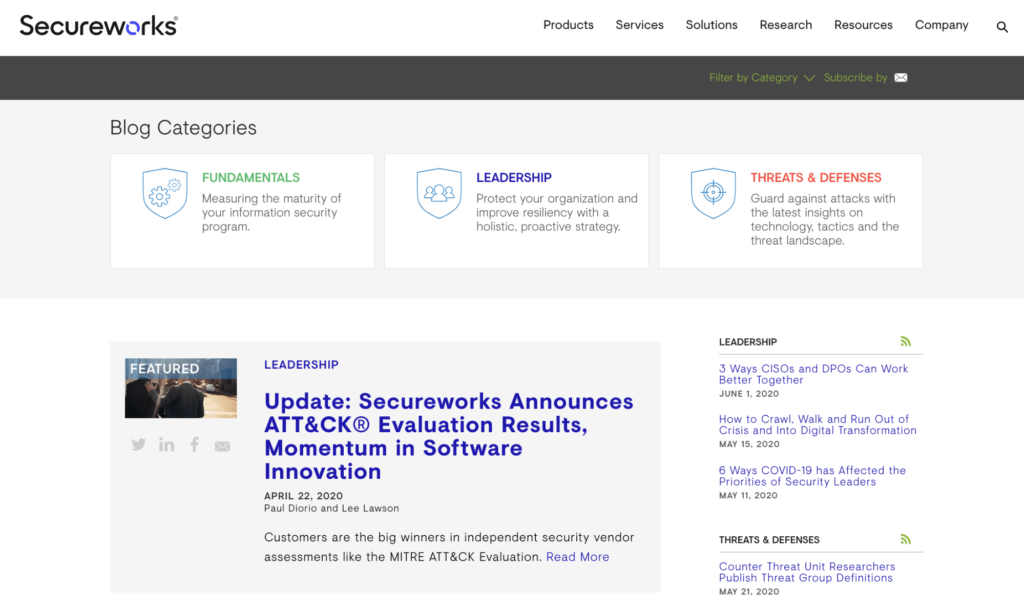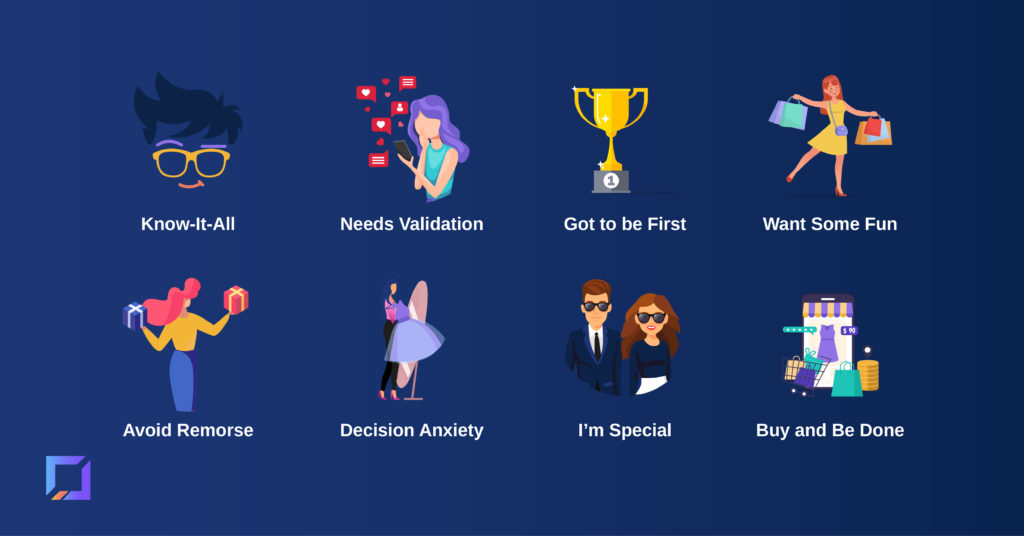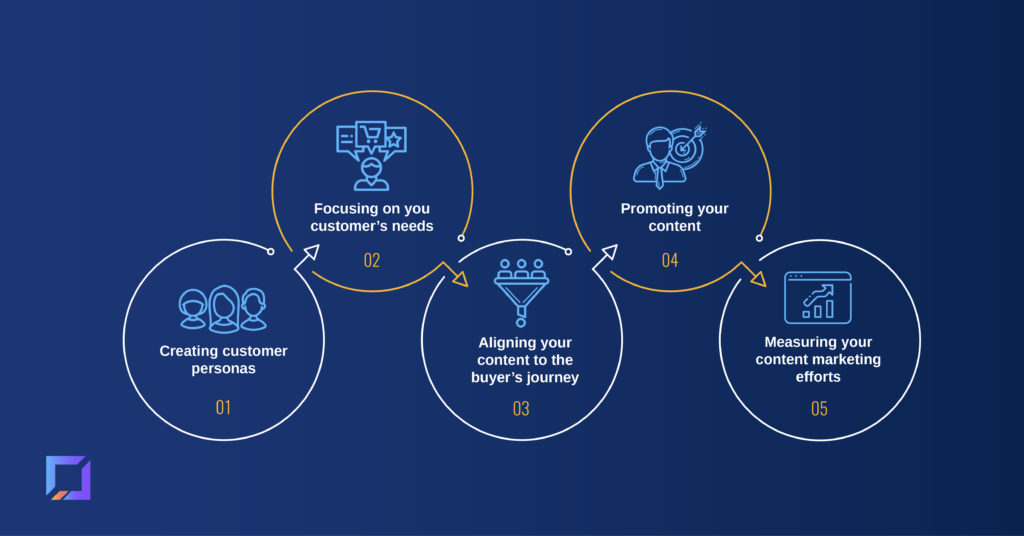Palm Springs is a desert resort town located 111 miles east of Los Angeles.
It grew to fame as Hollywood’s elite flocked in the mid 1900s, and has been a popular tourist destination ever since — pulling in a million and half visitors each year.
I’ve been vacationing there for as long as I can remember.
My parents used to take our family all the time, and it was common to have timeshares or extended stays. My wife and I have continued to go there frequently over the 8 years we’ve been together.
In Downtown Palm Springs, right on Palm Canyon Drive, there used to be a small, independent bookstore called Latino Books Y Mas.
Each trip we would try to stop in at least once, to get a new book to read by the pool. It was owned by a friendly husband-and-wife team, who would always be there to help or make recommendations. He was a retired school teacher, who started the bookstore as a way to stay busy during their retirement.
However, on a recent visit, we walked over to the bookstore and discovered it was sealed shut with locks. Not only that, but there was an eviction notice on the door.
I felt really bad. These were nice people and the shop seemed to do reasonably well with a good location. So I jumped on Google and tried to see if there were any stories or updates about what happened.
And I was quickly surprised.
Turns out, it wasn’t money problems after all. They were being kicked out. But it’s because the landlord is planning on a $100 million redevelopment project. So they terminated their lease 2½ years early with only 30 days notice.
And I read all about this in the Los Angeles Times.
Wait a second… doesn’t that seem odd?
Real estate problems and lease issues like this happen every day.
Why would the Los Angeles Times be covering this story — when it’s located 111 miles outside of Los Angeles and not even in the same county?
Why is this little story getting all this time and attention?
And why is it so important that I’m bringing it up again?

Get long-term ROI.
We help you grow through expertise, strategy, and the best content on the web.
Good artists copy. Great artists steal.
The hit TV show Revenge premiered towards the end of 2011 with generally favorable reviews (66/100 from Metacritic).
Since then, it’s become one of the biggest new shows on television and is the highest rated show for ABC since Lost.
It stars a young heroine who returns to her childhood home in the Hamptons to secretly plot revenge against the family and people who were responsible for her father’s murder.
The storyline is interesting enough, and people seem to love it (but let’s be honest — it’s no Mad Men).
But it’s not new…
In fact, this same storyline has been around for over one hundred years.
And it’s popped up multiple times since then in different reincarnations.
“Good artists copy, great artists steal,” is a quote generally attributed to Pablo Picasso.

And while I wouldn’t necessarily go that far, he was on to something.
The plot structure for almost every single popular TV show, movie, or book has already happened before.
In content creation, there are certain plots, storylines or templates that are almost always successful. So they are rehashed, reused, and adapted to give it a contemporary spin that will fit a new specific, target audience.
The TV show Revenge? It’s loosely based on The Count of Monte Cristo, which was finished by Alexandre Dumas in 1884(!).
And what about our little bookstore from earlier? Classic David vs. Goliath.
The Los Angeles Times is covering this story (happening outside of their county) because it depicts a small, independent bookstore — the last in the area! — who is being treated unjustly by a big, wealthy property owner.
The tiny, sole proprietorship doesn’t want to give up.
This is their retirement and livelihood after all! And the big conglomerate is pushing and throwing their weight around to get what they want.
If you can pick up on a story like this, then you’ll know it’s going to be a hit before you even publish it.
And if you can tie your product or service to it, then (a) people will actually look forward to reading your content, and (b) it will actually drive new business.
Because today, marketing is in the attention business.
The more attention we can get, the more people we’ll reach.
The more attention we can hold, the longer we’ll have to build recognition and recall.
The more recognition and recall, the more direct sales we’ll generate.
And it all starts — and ends — online with content.
Content that interests, persuades, and entertains.
And content that gets your readers to become clients and customers.
Key Takeaway
Great content gets noticed and drives more sales.
And if you ignore content marketing?
Well… let’s just say you’re losing a major competitive advantage.
Don’t let that happen.
How to create blog content ideas for “boring” companies & industries

Content marketing is the backbone of improving your marketing ROI.
And a blog writer can get more traffic, leads, and customers than advertising.
But what if you’re in a “boring” industry? You know, the type where no one reads or shares anything.
Is content marketing still important? And if so, how do you create content that will actually bring in business?
Here’s how any company, in any industry, can come up with compelling blog content ideas that will build your business.
No matter what industry you’re in, if you’re interested in internet marketing, then you have to create content.
Because creating a “media marketing asset” gives you direct access to building an audience. You won’t have to rely on other sales channels or “pay an advertising toll” each time you want to reach your customers.
Think about your favorite magazine. Why do they give away so much valuable content for next to nothing?
They do it to build a loyal subscriber base. They want to build a “media asset” that people willingly come back to each day, week or month.
They’re then able to monetize that attention. That’s why so many companies spend billions on advertising each year. They’re paying for your attention.
The same is true online, and it’s why content is an essential component of “inbound marketing”. It also scales better than advertising, so you’re able to grow larger and faster, for less over time.
That’s why creating content is essential for any industry. But not just any content. You need exceptional content that gets your target audience’s attention and keeps them interested.
How do you do that?
By intimately understanding your customers.
Who are they? What do they like and dislike? What keeps them up at night?
Until you understand these things, you won’t be able to create content that speaks to them and compels them to take action.
The difficult part about creating content for a “boring” industry is figuring out what your target customers actually want to read.
Here are two ways to help you with that.
Tip #1: Narrow your focus on a specific audience

Most businesses have several different customer segments. Which is great for revenue, but difficult for marketing.
These people all have different motivations. So it’s hard to create content for a vague, general audience.
The first solution is to narrow your focus and go deep.
This works well when you want to develop a market segment, like college kids for example, and you focus specifically on their needs, wants, and desires.
If content marketing starts with a specific audience’s problems, then it’s incredibly difficult to create content for different types of people from different age groups and interests.
They’re all going to respond to different things.
So by narrowing your focus on one specific audience segment, you can create and design everything for their unique characteristics.
For example, American Express created the OPEN Forum to cater to small businesses.
Instead of trying to go after every type of Amex customer, they focused on one subset and built out a deep, content rich site that caters to this market’s unique needs and desires.

In 2010 alone, OPEN Forum had over 10 million page views. How much do you think that would have cost in advertising?
And it was created (and is owned) by a finance company… not some “traditional” business media entity you might expect like the Wall Street Journal, Forbes or Fortune.
This level of audience specificity and attention to detail is why the OPEN Forum site is one of the largest online media websites for small businesses.
But there’s one more thing.
You won’t find many articles on OPEN Forum about their company, or credit cards in particular.
Here’s why.
Tip #2: Focus on what your product or service does for others

The most common excuse for not blogging is, “My industry/target market doesn’t want to read anything”.
You’re right… no one wants to read about you or your industry. But they would read about their own issues.
Instead of being topic-focused, be audience-focused.
The topics will change or evolve depending on what your audience cares about.
Think about how your product/service helps other people. How does it take away their pain? What is the solution they get?
For example, no one wants to read about your hotel. But they would read about planning a vacation (where your hotel is located).
Or how about home improvement and appliances? Many people could care less about paint, power tools, and dishwashers (myself included).
Lowe’s understands this. So they focus on what you’re trying to do with their products.
They have a content-driven site, Lowe’s Creative Ideas, to help you transform your own indoor spaces, outdoor spaces, and weekend projects.

It’s packed full of video tutorials, educational articles, and step-by-step instructions to walk you through your own DIY projects.
Take a look at their Pinterest account, where they’ve put together attention grabbing “boards” like Grillin’ and Chillin’, and 50 Projects Under 50 in an easy-to-spread format.
Oh, and they’ve also created a magazine based on all of their content. The digital team at Lowe’s understands that they’re in the media business.
But more importantly, they understand their audience, and the benefit their products are trying to give them.
Let’s look at another example:
Secureworks provides information security services to protect organizations from cyber attacks.
The team discovered that many companies that contact them are still in the early stages of the buyer’s journey. They need help understanding why they need information security.
Secureworks created a blog that helps prospects understand the value of information security and how they can protect their organization.

Secureworks also created an in-depth resources page packed with case studies, data sheets, reports, white papers, and videos that target different personas and various stages of the buyer’s journey.
The result?
Their conversion rates doubled.
Savvy online and B2B marketers know that they’re in the media business. Because you can’t sell anything without first getting your customer’s attention.
But content is a commodity. Millions of blog posts go up each day. So “good” content just doesn’t cut it anymore. You’ll just get lost in a sea of mediocrity.
If you want content to drive sales, then it needs to be exceptional.
Most importantly, B2B copywriting always needs to answer the question that your prospects are asking: “What’s in it for me?”

That’s easy to do with B2C copy in a sexy industry. But what about all those boring ones?
No matter what industry you’re in, the key is understanding your audience, and translating the benefits you provide.
Because people consume content and share it with their friends on a daily basis.
Last year, Twitter sent 230 million Tweets with links per day, and Facebook had over 30 billion pieces of content shared in a month.
If people aren’t liking or tweeting your posts, it’s not because “that audience doesn’t”. It’s because your content doesn’t move them.
Three shortcuts for creating B2B copywriting ideas in record time

Most B2B copywriting fails.
It fails at being interesting and entertaining enough to grab and hold people’s attention. (Mostly, because it’s too commercial and all about the company — instead of the reader’s problems).
And it fails at being serious enough to funnel people into the objectives you’re trying to hit.
That’s the Catch-22 of content marketing, and it’s why most people struggle to put pen-to-page on a consistent basis.
What makes matters worse, is that even if a business comes up with a great idea for a piece of content, it doesn’t resonate with readers. It doesn’t resonate because they have trouble relating. They have trouble relating because you rush into the body or solution of a blog post without properly explaining the context and setting the scenario.
Lacking a lead, the beginning part of an article that builds interest and hooks attention, creates a disconnect which makes it hard for people to fully understand the gravity of what they’re reading (or watching, or listening to).
You need this “bridge” after grabbing someone’s attention with the headline and premise of your content, to make sure they will stick around to read, watch or listen to the rest of your content.
The good news is that you don’t have to come up with this from scratch or be overly “creative”.
People don’t want new. They want familiar… albeit with a fresh twist.
Don’t believe me?
The brilliant Made to Stick told the story of how 89% of award-winning ads could be classified into six basic categories or templates.
And if you know where to look, then you can find evidence of this in your own marketing efforts as well.
For example, after analyzing over 280,000+ emails for the best performing subject lines, we found that the first and third most popular were basically identical “templates”.
This is actually good news.
It makes our lives easier and simpler.
And it helps businesses who are struggling with B2B copywriting and content marketing to find a clear, simple direction to follow.
With that in mind, here are three ways to open a blog post (or any content) that will successfully hook readers and keep them reading on-and-on.
Tip #3: Bringing a subject to life

Brand marketing is storytelling.
Seth Godin has been saying this for years. Red Bull, Nike, and McDonald’s are perfect examples. Hardware store Lowe’s even excels at it.
Therefore the best leads often contain little vignettes, stories, or anecdotes that illustrate the main point. They don’t simply tell, but also show.
Usually, the best nonfiction writing, especially magazine articles, use stories to illustrate the main points in some interesting or clever way.
Tip #4: Shock the reader out of boredom

Controversial topics work so well as ‘leads’ because they stand out.
They use pattern-interruption by posing a paradox which leads to intrigue and mystery.
You can borrow from the first approach and do this with an interesting story, or you can simply find startling statistics or questionable quotes and go from there.
HP Studios offers a perfect example with its The Wolf campaign.
They took an arguably uninteresting topic, printer security, and turned it into something that grabs your attention.
The video starts off with a startling statistic — out of the hundreds of millions of business printers in the world, less than 2% are insecure.
The story follows a malicious hacker, played by Christian Slater, who manages to hack into an office printer and steal sensitive company information.
This example shows that compelling narratives can be crafted even for seemingly uninteresting products.
The trick is to make a bold claim and then back it up. You can’t hedge your bets or back away after delivering.
(Remember: you can’t stand out and fit in at the same time.)
Tip #5: Understand that people buy based on emotion

Everyone, including those stodgy B2B people you’re trying to sell to, are influenced primarily by emotion and other intangibles (like “fit” or “trust” or “likeability”).
And people largely only care about themselves, not you (or me).
Which again, is good news. This makes life simple and straightforward.
The emotion that HP Studios played on was fear — that an insecure printer could result in a security breach if it’s not addressed.
That’s what makes their call to action so powerful to a potential B2B buyer. It appeals to their emotions. A video featuring HP Studios’ secure printers just wouldn’t be as effective.

Instead of having your B2B copywriter publish another selfish blog post tooting your company’s horn, turn it around on your customers. Appeal to their emotions, their problems, and the issues they face on a day-to-day basis.
Are they scared? Why?
Are they overly confident? How so?
Are they missing something that they should be aware of?
Explore these themes, and dive into details. Just make sure you’re focusing on why these people should really buy in your B2B copy (as opposed to your own personal reasons for wanting them to).
Here are three prerequisites for a killer lead
“If creativity is overrated, then you need hypotheses rather than epiphanies.”
Although this might sound easy, it’s usually not.
So unfortunately before you begin, there are a few prerequisites you should probably be aware of:
Tip #6: Research, Research, Research
Everything in marketing and B2B copywriting (should) start with research. The best copywriting courses will tell you this. If creativity is overrated, then you need hypotheses rather than epiphanies. Start with guessing, and always come back to your customer’s main objectives. Which brings us to…
Tip # 7: Innate Customer Knowledge
In order to create good copy (or a lead) that speaks to customers and really resonates with their issues, you have to actually know what those things are. Intimately. Start with customer interviews, or surveys, or anything that gets you closer to understanding their decision making.
Turn to social media networks and “listen” in. What are your prospects saying? What challenges or struggles are they facing?
Compelling B2B copywriting that converts starts with an intimate understanding of your audience. Get this right and your B2B copy will practically write itself.
Tip #8: Topic Expertise
The best content always comes from the people with deep domain expertise. Not ghost writers. Not freelancers. And certainly not “professional writers”. So get experts to weigh in and give you the “meat”, and let your B2B copywriter worry about putting it all together.
These approaches to creating B2B content aren’t earth-shattering or overly-complex. But they are difficult to execute if you don’t know what you’re doing.
B2B content marketing strategy examples

The value and ROI of content marketing varies wildly by industry.
But content marketing works BEST in the least likely place: old, stodgy B2B industries.
Why? Because these industries usually have complex products or services and a long, consultative sales cycle.
Content creation, optimization, and promotion helps you scale your efforts by addressing each stage of the buying cycle and speeding up the learning curve through educational or insightful content in different formats.
The Catch-22 however, is that most B2B companies think they’re too “boring” to make it work. You’re probably on the fence. And you’re nowhere near sold on the idea that it can work for YOU.
After all, no one would be interested in any sort of content about your brand, right?
Aside from changing your attitude (you Debbie Downer, you), there are a number of things you or your copywriter can do to craft a more effective content marketing strategy.
In short, the things that have the biggest impact on creating a successful B2B content marketing campaign are as follows:
- Creating customer personas: Think about who your company’s “model customer” is (based on segmented customer data taken from market research, feedback, interviews, and customer data platforms like Hightouch) and focus on creating content that will appeal to that type of person.
- Focusing on your customer’s needs: No one cares about your industry or the service/product you’re offering. So instead of creating content about your product/service, focus on your audience’s pain points and subtly position your brand as the solution — NOT the other way around.
- Aligning your content to the buyer’s journey: The buyer’s journey is the set of steps that prospects go through before they become a customer. B2B content you create needs to address concerns that prospects have at various stages of the buyer’s journey. As you educate your prospects, you can move them down the sales funnel.
- Promoting your content: Figure out the best channels to share your content, provide incentives, promotions, etc. for people to share your content, petition thought leaders to help get your message out, and post thought-provoking content to sites that are relevant to your target audience.
- Measuring your content marketing efforts: Measure the results of your web content to identify what resonates with your audience and what falls flat. Track key metrics like traffic, conversions, engagement, etc. If a piece has performed particularly well, expand more on it or target different angles.

Sounds easy enough, right?
Now that you’ve got the gist of it, let’s look at some real life B2B content marketing examples of how companies have used these ideas to transform their content marketing from boring to compelling, lively, and appealing.
Tip #9: Emulate Evernote’s word of mouth

Obviously, Evernote has a huge base of free consumer customers. But they primarily make money from their business users.
As a mobile site and app, Evernote has managed to grow a community of over 75 million users, and a $1 billion valuation with more than 19,000 new users every day.
This type of rapid growth was possible because they did (and continue to do) a lot of things right. Things like…
- Flawless synchronization across every device and operating system.
- Utilizing proper semantic structure correctly by incorporating relevant metadata and markup for search and social sites.
- Having a FAST site that loads faster than 68% of websites.
But that’s not all that the company has going for them.
Aside from their technologically sound decisions and features, Evernote also has a very good product.
It’s clear that the company has put a ton of effort into making their app useful, user-friendly, and all-around awesome.
So awesome that when they nearly ran out of money and almost shut their doors during the financial crisis of 2008, they were bailed out at the last minute by a random user from Sweden.
The man claimed that the product had changed his life. He was so passionate about Evernote that he made a half million dollar investment in the company within a week.
Aside from getting a major investment, having an outstanding product has contributed to Evernote’s success in many additional ways — most of which involve people liking the app and sharing it with their friends/communities.
All of those free consumer users help promote the product, which in turn leads to more business customers.
Evernote has also used word of mouth to get a write up in TechCrunch, creating an ambassador program as well as a holiday pledge program, and much more.
Here’s what we can take away from their success:
TAKEAWAY #1: Connect with the big dogs. By reaching out to popular sites like Techcrunch as well as popular tech bloggers, Evernote’s success skyrocketed. And since they had such a good product, to begin with, people and companies were eager to talk/write about it (in other words, your product and story are more important than your connections).
TAKEAWAY #2: Offer incentives to share. With Evernote’s referral program, the company allows users who sign up from a referral get a free month of premium while giving the referrers points to redeem for perks.
TAKEAWAY #3: Use clever, timely promotions. During the holidays, Evernote petitioned potential users to sign up to receive email tips and guidance in order to get a better user experience during the holiday season. This specific and limited-time campaign exponentially grew Evernote’s user base.
Tip #10: Copy PayScale’s infographics

PayScale is a site that allows job candidates, employees, job seekers, and employers (HR) to compare their salaries across job titles, industries, and locations.
They (somehow) have managed to add sex appeal to their otherwise boring industry through the use of infographics.
Their infographics are researched meticulously, designed beautifully, and distributed across a number of appropriate promotional channels (reaching exactly their target market).
One of the best examples was Mashable, where it has received nearly 8 thousand shares to date. Here’s what we can learn from their success:
TAKEAWAY #1: Understand your audience. In order to create content that best serves your potential customers, you’ll need to figure out what makes them tick. You can do this through qualitative data (asking them) or through quantitative data (figuring out what the most popular content on your blog is and replicating those posts).
TAKEAWAY #2: Develop a unique angle. There’s a TON of content available to people these days. Make yours stand out by putting some thought/imagination into it. Payscale has good designers and works with data, so an infographic was appropriate. This may not be the case for you — which is why it’s important to understand your strengths and work with what you’ve got.
TAKEAWAY #3: Spread the word appropriately! Payscale used Mashable (among other sites) not because they were the biggest, but because that’s where their specific customer personas get their information! Spend as much time finding and vetting media outlets, bloggers, and your peers to make sure when you get the word out, it sticks.
Tip #11: Get inspired by Hubspot’s ‘free’ tools and services

HubSpot was founded in 2006 on the concept that traditional marketing is broken.
In order to fix it, the company offers an inbound marketing software platform that helps businesses “market to humans.”
Today, Hubspot has over 10,000 customers and has filed for its IPO.
Co-founders Brian Halligan and Dharmesh Shah wrote the book Inbound Marketing: Get Found Using Google, Social Media, and Blogs and consistently provide potential customers with loads of promotional resources such as free ebooks, webinars, and blog posts.
According to this article, the inbound marketing services that Hubspot advertises as being critical to any company’s success have also been vital to their own growth.
“I cannot emphasize enough the importance of inbound marketing in our growth. (I know I am biased and I know it is self-serving, but that does not make it a lie.),” says Hubspot CMO Mike Volpe.
Here’s what we can learn from them:
TAKEAWAY #1: Offer free tools. In addition to their successful blog (with a ton of content that has relevant calls to action that vary from post to post), numerous ebooks, and webinars HubSpot also has a variety of completely free software tools whose sole purpose is to generate potential leads. Not only does this content expand their reach — it also builds trust with their target audience by helping them fix their problems in a unique, timely and inexpensive way.
TAKEAWAY #2: Offer free evaluations. HubSpot’s Marketing Grader allows users to “evaluate the effectiveness of your marketing by looking at many factors, including your website, social media activity, mobile responsiveness, blogging activity, email marketing, lead nurturing, and analytics” — for free. This hooks potential clients and makes them more likely to take the next step, which is paying for more comprehensive services.
TAKEAWAY #3: Practice what you preach. As demonstrated above, HubSpot actually does all of the things that they want their customers to do. And it clearly works for them. This makes potential customers more likely to believe that it will work for them as well.
There you have it — proof that content marketing can work for even the most boring industries. And with a bit of creativity, critical thinking, and strategizing, it can work for you as well. Apply these takeaways to improve the B2B copy across your marketing materials.
Why B2B content marketing is easier than you think

B2B content marketing can seem boring, unappealing, and lifeless when compared to flashy ad campaigns from companies like Nike or Red Bull.
And while it’s true that more mundane B2B businesses may never have a huge appeal that some large, consumer brands might, that doesn’t mean they can’t use the same strategies — like content marketing — to improve their differentiation, attract attention, and generate more leads.
Because if positioned correctly, even the most “boring” of B2B businesses can develop and execute a content marketing campaign that will continue to provide a solid ROI for years to come.
Here’s how any B2B company — in any industry — can create compelling, properly placed, effectively distributed content that will generate inbound leads and improve your bottom line.
Tip #12: Start by creating customer personas
Emphasizing (and putting thought into) customer personas is one of the best ways to improve the effectiveness of your content creation capabilities.
Personas are your company’s “model customers”, based on segmented customer data taken from market research, feedback and interviews.
These personas make it easier to understand customer motivations so that businesses can create content effectively by knowing exactly WHAT to write about, and WHERE to promote it.
How?
In B2B content marketing, customer personas can still be thought of as individuals (as opposed to entire companies).
You can start with their personal details and basic demographic information, and then quickly hone in on what their job description is and how your product or service makes them better at it.

Focus on the following questions:
- What is your buyer’s main goal?
- What problem or pain points are they currently experiencing that might prevent them from achieving this goal?
- How, specifically, does your product or service help solve this problem?
With these thoughts in mind, you should be able to draw up a pretty simple context of why these individuals (and their companies) might need your product or services (and how to better appeal to them).
Depending on how complex your products/services are, you could have more than one customer persona. Secureworks, for example, developed six different personas for its managed security solutions.

This has allowed Serviceworks to tailor their B2B content to key decision makers.
Having a good, evidence-based idea of who you’re trying to sell to is an important first step, but there are many other equally important pieces to the puzzle.
Tip #13: Come up with content ideas in five minutes or less (here’s how)
Once you have a pretty good idea of who your customers are, what their needs are, and how you can fulfill those needs, you can start creating content that will engage them and motivate them to take action.
But for “boring” industries, it can be a challenge to figure out WHAT exactly will compel them to give you 5 minutes of their lives to read your blog post or magazine article.
Here are five ways to help you with that:
➀ Narrow your focus on a specific audience. Remember those customer personas we just talked about? If you came up with more than one, great. But for the purpose of creating content, it’s best to focus on creating and designing everything to cater to one specific audience segment’s unique needs and desires. The more niche, the better.
➁ Focus on what your product or service does for others. Instead of blogging about your industry, focus on how your company can meet your audience’s unique needs. Talk more about their problems and symptoms, while subtly positioning your company as the solution. They’re successful because they focus on the practical uses and benefits of their products instead of just the products themselves.
③ Identify questions your B2B audience is asking. Create compelling B2B content by addressing questions that your prospects are asking. Quora — a question and answer site — offers a great starting point. Type in your keywords and you’ll see a list of questions that you can use as inspiration for your content.
④ “Listen” in on conversions. What are your prospects talking about? Find your audience on social media networks like Facebook and Twitter. Take note of the content they’re sharing and engaging with. Don’t just recreate those pieces though. Instead, focus on a different angle or even offer a contradicting viewpoint.
⑤ Ask your audience. Still stuck on content ideas? Create an online survey for money and send it to your customers or post on your social media profiles. Ask what common challenges they’re facing and what they’d like to know more about. This works because you’re uncovering content ideas directly from your audience.

Coming up with great content ideas that resonate with your audience can be challenging.
But it doesn’t have to be.
Just remember one important rule: Always focus on your audience’s needs.
Tip #14: Promote your content like a boss
By now, you might have a pretty good idea of some content you should be creating and how to apply it to your target audience.
How are you supposed to get it out there so that it gets read? 90% of the information in the world has been created in the last two years — and standing out can be difficult.

But it’s crucial to the success of your B2B copywriting and content marketing efforts.
There are a number of things to consider when figuring out how to increase your reach. Here’s a few of them:
- Deciding which channels work best for your content and your audience (i.e. specific blogs, Twitter vs. LinkedIn, etc.).
- Finding ways for readers to share your content like promotions and incentives.
- Petitioning thought leaders for their help in getting your message out to the masses.
- Posting thought-provoking content to media sites that are relevant to your customers (not your peers).
There’s no limit to the ways in which you can utilize the tips above to increase your reach and get more leads.
And when you feel like your content well has completely dried up, remember the three R’s: Repurpose, Reuse, and Reposition.
You do this by breaking popular posts up into additional, more focused posts or by sprinkling excerpts from them across your social media outlets over time.
You can also repurpose old content by switching up the channel (video, email newsletter, blog post, and podcast, etc.) while keeping the message the same.
(Read more about repurposing content here).
Tip #15: Tap into your biggest B2B asset (your people)
Positioning individuals within your business as thought leaders is an excellent way to get “clickable” content (not the boring kind that no one reads) out there on the web.
For B2B industries (particularly niche markets), this is an extremely effective approach.
Consumers in these markets typically know the end result they want, but don’t quite fully understand the technology or process to successfully implement it (and thus need someone to trust to do it for them).
By developing key staff members to become experts in their field, the entire company will benefit from the outcome of people listening to (and buying into) their expertise. Here’s a few simple tips on how to go about doing this:
- Optimize the social media presence of key staff leader(s) to match up with their expert/thought leader status.
- Develop a brand message/story that’s clear, consistent, and appealing.
- Identify top-tier publications to share linkable content with.
- Secure a reputation catalyst (this can be a sponsored post or writing great content for a top-tier site).
- Build relationships with major influencers in the industry — doing this will organically generate links from mentions over time.
An exceptional B2B content marketing strategy generates press, leads, and new accounts…
… while average content wastes your time, your customer’s time, and squanders your budget in the process.
Content marketing is one of the best strategies to educate prospects, pull them in early in the buying cycle, build trust, and increase conversions of new leads.
Even if your brand is “boring”.
And with a good creative strategy, it’s possible for even the most mundane of businesses to generate a solid online presence — something that will provide a greater return on investment than would ever seem possible.
5 B2B copywriting tips to instantly increase content appeal

Before Draper, there was Ogilvy.
Content-driven marketing has been around for decades. As long as the 4-Ps.
It fueled the Golden Age of Advertising. And now it’s making a comeback as brands have become publishers.
But at the heart of it all, is copywriting.
The art of using the written word for sales and persuasion, copywriting is behind every good web design, conversion landing page, blog post, advertisement, email campaign, and social update.
Trouble is, while consumer brands like Red Bull and Nike get it, service firms have been late to the party.
Most claim it’s because people don’t “get it”. Some say their business is boring.
However, the truth is that most are just terrible at it.
But fear not, because the first step is always acceptance. And these 5 B2B copywriting tips can help instantly boost your boring, tired B2B copy.
Tip #16: Make the reader the star of the show
“The best content marketing sells the hole, not the drill.”
People come to your website or read your B2B marketing materials because THEY have a problem. It might be a simple question, but most often, they’re not immediately interested in you (or your company).
So start with switching the point of view for your website copy and marketing materials to addressing customers, first.
Then take this a step further, and check for “you”-oriented language. Speaking directly to “one” person can help personalize and get your message across to resonate with someone who might otherwise be too busy to care. (And if possible, try to see if you can reduce or eliminate the number of times, “I”, “We”, or “Us” show up.)
Then once you’ve switched the point of view, go straight to the point with your B2B copy.
Having a compelling lead will lure people in, and give you a chance to get your full point across.
The goal with B2B copywriting is to catch their attention and build interest, before slowly transitioning the content back to how your company can help.
But what does this mean? How does it look?
Sell the hole, not the drill.

If you’re truly focusing on the reader and taking their point of view, then you need to sell the solution — the end result, the outcome they’re looking for — and not your widget that helps them solve it.
Tip #17: Don’t talk past your customers
Most B2B companies “talk past their customers”, according to a recent McKinsey study.
“The themes that many B2B companies consider important for brand imaging appear to have minimal influence on buyers’ perceptions of brand strength.”
The problem is that jargon and technical specs don’t do a good job accurately explaining what you’re actually talking about.
They are meaningless to the majority of people who fall outside of the “innovators”.
And they quickly become cliché when every competitor of yours uses the same exact phrasing to describe the same exact things you do.
So at best, most people don’t understand what you do.
And at worst, you’re forcing people to see you as a commodity (and thus, compete on price).
“95% of your audience needs to know exactly what your jargon means in order to use it.”
Contrary to popular belief, excessive use of jargon doesn’t impress anyone.
Business people use them when they’re trying to sound important to a potential B2B client, but in reality have no idea what they’re talking about.
The hallmark of someone who’s truly an expert is the ability to take complex issues and explain them in simple, easy-to-understand ways.
Asana doesn’t talk past their customers. The B2B copy on their homepage uses clear and simple language to convey how businesses can benefit with their SaaS product.

A good rule of thumb? 95% of your audience needs to know exactly what something means in order to use it. Make it clear with your B2B copywriting.
Tip #18: Don’t let MBAs write your B2B website copy
… or anyone else with an advanced degree for that matter.
Building off the last tip, you want to try and keep your reading comprehension level down to primary or secondary education levels.
Because people are busy, multitasking, and don’t have the time, patience, or interest to read the bland, overly-formal, legal speak on your website.
How much time do you have to capture your audience’s attention?
Not much.
If your B2B copy doesn’t generate interest within 15 seconds, your visitors will bounce.

You need to emphasize brevity (not dumb it down). And pretend you’re having a real conversation.
On top of that, people are busy. So keep them moving.
Use sentence fragments, keep paragraphs short, and avoid unnecessary wording if possible.
That means writing in a friendly, conversational way. As if, you know, you were actually trying to explain this to somebody in person.
“Studies show that people have difficulty understanding sentences beyond 30 words.”
And that means breaking classic writing principles like beginning sentences with conjunctions or ending with prepositions.
Snappy, short sentences go a long way. Because studies have proven that content becomes too difficult beyond 30 words.
Unnecessary words (like adjectives), fluff (like most introductions and conclusions), and redundant over-explanations are like Kryptonite to eager readers.
Tip #19: Don’t underestimate formatting
Good formatting should help a reader follow, consume, and quickly understand your content.
Carefully organizing your information, in the order you want people to consume it (like the inverted pyramid form), will help make sure it resonates with people.
For example, using subheads in a logical order will quickly help scanners to see how information is being presented.
Then try to keep each section relatively brief. Another good rule of thumb is to limit paragraphs to 5 sentences max.
Graphics can help get your point across, while minimizing the amount of text needed to communicate them. And basic style options like BOLD, ITALICS, “QUOTES”, • LISTS will break-up those long passages of text.
For example, we recently published a very long post to help understand SEO. We structured the contents in an appealing way focusing heavily on the ease of use:
The result?
Time on site for this page is twice the average.
And the exit rate is 15% less than average.
Those numbers are good. But they’re very good for an extremely long piece of content.
TOP TIP: If you’re interested in publishing long form content (you absolutely should be) you can’t do it in an efficient way without a tool like Wordable. Wordable’s free migration tool makes it easy to transfer content from Google Docs into a CMS like WordPress without spending time on annoying formatting adjustments.
Tip #20: You can’t stand out while you ‘fit in’
The goal of your website is NOT to provide information. Or be an “online brochure”.
The goal with B2B copywriting is to sell. Always. And whenever possible. (But not in a used car salesman way obviously.)
So if you’re trying to sell, then you need to be persuasive. And if you’re trying to be persuasive, then that means you need to express opinions.
The easiest way? Pick an enemy.
It could be a person, a competitor, an industry, a trend, or simply a way of thinking. But you need to pick something.
Or if you’re Abercrombie and Fitch, it could be fat people.
The point is, if you truly want your B2B writing to stand out or your company to get recognition, then you can’t fit in at the same time.
And that starts with the language you use.
Don’t hedge your arguments. Have a point of view and support/stand by it 100%. Avoid “clarifying” words like usually, or sometimes when trying to make a point.
It may not be easy. And it may not be comfortable at first.
But in the long run, it will be profitable.
Final thoughts
The same old drab content just doesn’t cut it anymore.
Not in today’s digital world where consumer expectations have changed.
But great content?
Now we’re talking.
Great content gets noticed and drives more sales.
And if you ignore content marketing?
Well… let’s just say you’re losing a major competitive advantage.
Don’t let that happen.
Get a B2B content strategy for your business. Book a call with us today!




